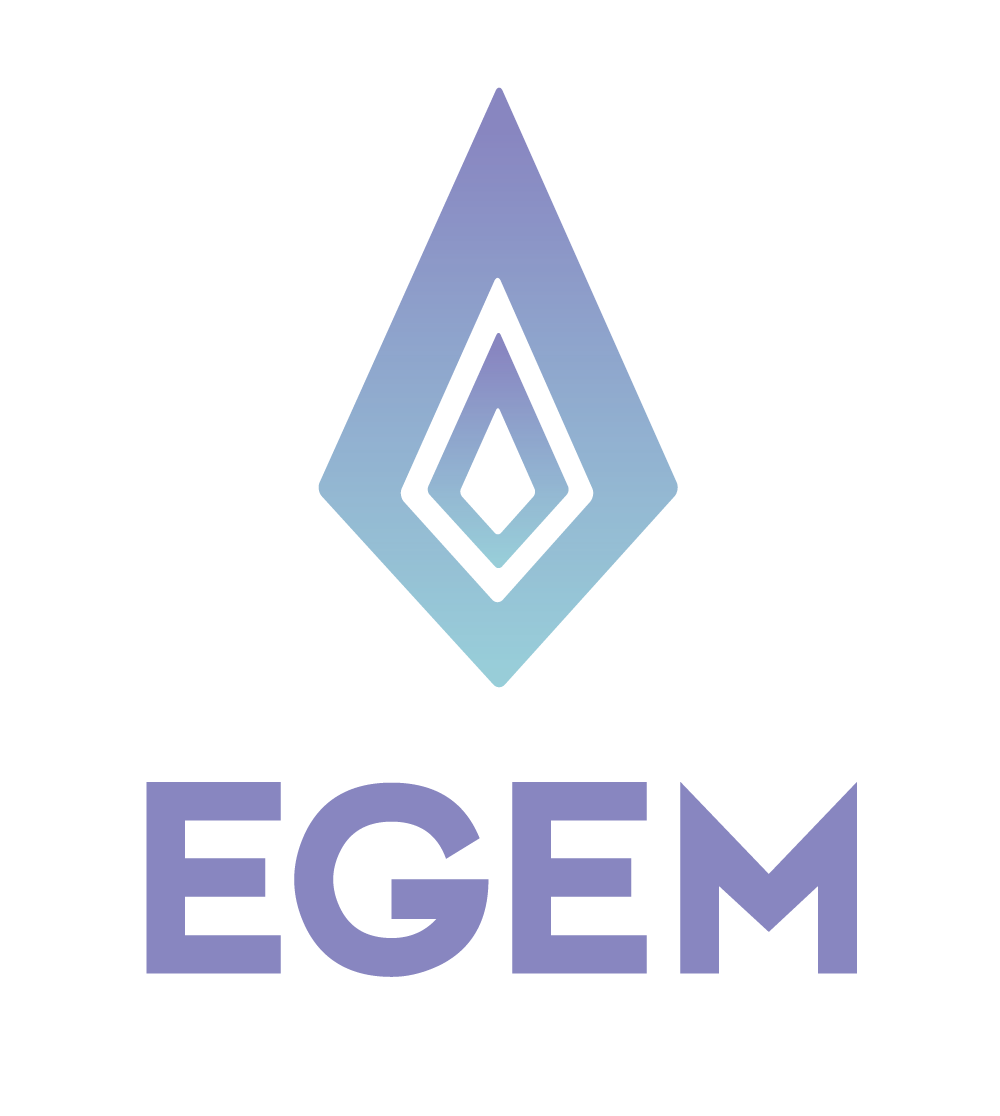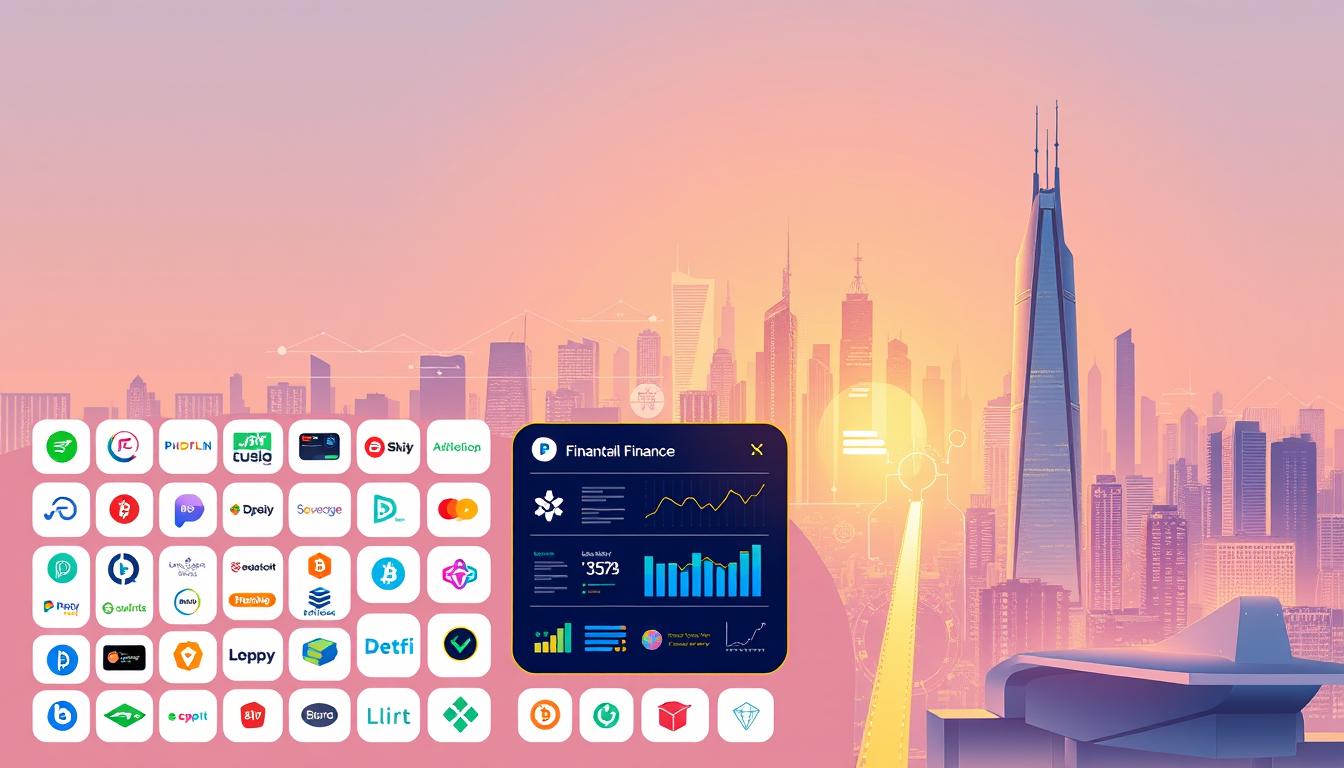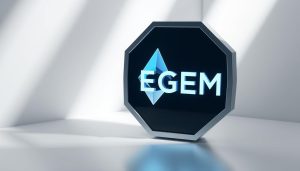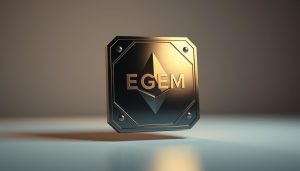DeFi protocols now hold over $200 billion in total value locked. This amount surpasses the GDP of many countries. It’s a staggering figure that highlights the rapid growth of decentralized finance.
Finding the best DeFi platforms 2025 isn’t about chasing high yields. It’s about understanding the fundamentals. After three years in this space, I’ve learned this crucial lesson.
Blockchain technology is rebuilding traditional financial services. It’s happening right now, and the pace is quickening. This shift is reshaping the entire financial landscape.
Not all protocols will survive in the long run. Some will thrive, while others will fade away. It’s essential to choose wisely when investing in DeFi platforms.
I’ve identified key players likely to shape the future. This guide offers a practical roadmap based on experience and analysis. It’s not just another generic list of platforms.
Key Takeaways
- Total value locked in DeFi exceeds $200 billion, showing massive market growth
- Success requires understanding fundamentals, not just chasing high yields
- Traditional financial services are being rebuilt using blockchain technology
- Platform selection should focus on long-term viability over short-term gains
- Regulatory challenges and investment frameworks are crucial evaluation factors
- Real-world experience reveals significant differences between protocol quality
Introduction to DeFi in 2025
DeFi in 2025 showcases real financial innovation beyond the hype. The ecosystem has evolved from experimental protocols to a sophisticated network. It’s a complete reimagining of financial infrastructure, not just technological advancement.
High-profile cases have strengthened the space through regulatory clarity. Institutional adoption is accelerating at an unprecedented pace. The user experience has improved, making these platforms accessible to non-technical users.
What is DeFi?
DeFi shifts from traditional banking to code-based financial services. It replaces trust in institutions with trust in smart contracts. These contracts automatically execute financial agreements without human intervention.
Crypto lending platforms use smart contracts to manage loans automatically. The code handles collateral, interest rates, and the entire process. This system removes middlemen and creates transparent, programmable financial services.
DeFi is accessible 24/7 and fully auditable. Every transaction is recorded on the blockchain for anyone to verify.
Importance of DeFi in Cryptocurrency
DeFi has become the cryptocurrency ecosystem’s backbone. It’s the infrastructure that enables new possibilities in finance. The total value locked in DeFi protocols has grown exponentially.
DeFi allows for innovative financial products like yield farming and flash loans. These innovations were impossible in traditional finance. They emerged by removing banking constraints.
DeFi is democratizing access to financial services globally. Anyone with internet can participate, regardless of location or economic status.
Overview of Market Trends
2025 market trends show a clear evolution towards maturity. Major corporations are integrating DeFi protocols into their operations. This operational integration validates the technology’s reliability.
Web3 applications are becoming more interconnected with DeFi protocols. Gaming and social media platforms are integrating crypto payments. This creates a seamless ecosystem of Web3 applications and financial services.
Regulatory frameworks now provide much-needed clarity for sustainable growth. The combination of institutional adoption and Web3 integration is creating ideal conditions.
Companies on leading blockchain platforms are building infrastructure for the next phase. The result is a more robust, user-friendly DeFi ecosystem ready for mainstream adoption.
Top DeFi Platforms to Watch
A few DeFi platforms stand out as market leaders. They excel in performance, innovation, and resilience. These platforms form the foundational infrastructure of the decentralized finance ecosystem.
These leaders adapt and evolve, maintaining user trust. Their technology and ability to weather market cycles set them apart. I’ve used each platform extensively, with impressive results.
Uniswap: The Leading DEX
Uniswap transformed DEX platforms by solving the liquidity problem. It introduced automated market makers, eliminating thin order books and high slippage.
I’ve made thousands of swaps on Uniswap. Each version improves the user experience. Version 3 added concentrated liquidity, boosting earnings for providers.
Uniswap handles over $1 billion in daily trading volume. It’s the go-to platform for new token launches and DeFi integrations.
Aave: Pioneering Lending Solutions
Aave revolutionized DeFi lending protocols with innovative features. Its flexibility and unique offerings make it a game-changer in decentralized finance.
Flash loans are Aave’s most groundbreaking feature. These uncollateralized loans are borrowed and repaid in one transaction. They offer zero default risk.
Users can choose between variable and stable interest rates. This control helps optimize positions during market volatility. Aave’s protocols secure over $10 billion in total value locked.
Compound: Dynamic Interest Rates
Compound’s algorithmic interest rate model adjusts automatically based on supply and demand. This creates a truly efficient market for lending and borrowing.
The COMP token gives users voting rights on protocol changes. I’ve joined several governance proposals, finding the community-driven approach effective.
Compound’s algorithmic precision impresses me most. Interest rates update every block, ensuring optimal capital efficiency. Early participants earned substantial returns during the 2020 DeFi boom.
| Platform | Primary Function | Total Value Locked | Key Innovation | User Experience |
|---|---|---|---|---|
| Uniswap | Decentralized Exchange | $4.2 billion | Automated Market Makers | Intuitive and Fast |
| Aave | Lending Protocol | $10.8 billion | Flash Loans | Feature-Rich Interface |
| Compound | Algorithmic Lending | $3.1 billion | Dynamic Interest Rates | Simple and Reliable |
| Market Position | Leading DEX | Top Lending Platform | Pioneer in Governance | Consistent Performance |
These platforms have overcome market cycles, regulations, and technical hurdles. They prove that sustainable innovation beats flashy marketing. Their growth, active communities, and managed assets speak volumes.
Each platform serves a unique purpose in DeFi. Uniswap handles trading, Aave manages lending, and Compound optimizes rates. Together, they form the backbone of decentralized finance.
Statistical Insights on DeFi Growth
The DeFi landscape reveals a story of transformation beyond market hype. Numbers show how experimental protocols have evolved into a sophisticated financial ecosystem. This new system is reshaping investment strategies worldwide.
Growth trajectories show remarkable consistency. User behavior has shifted from speculation to practical utility. This change reflects a maturing market attracting both retail and institutional participants.
Current Market Capitalization
DeFi’s total value locked has reached unprecedented levels, surpassing previous cycle peaks. The current market cap exceeds $200 billion across major protocols. This shows a fundamental shift in how capital flows through decentralized systems.
Stablecoins are now the backbone of DeFi liquidity. Over $150 billion in stablecoins circulate within the ecosystem. This huge liquidity pool enables complex trading strategies and lending mechanisms.
Capital distribution has become more balanced. Major protocols like Uniswap and Aave command significant market shares. Emerging platforms are also capturing meaningful portions of total value locked through innovative features.
Growth Rate Predictions for 2025
Analysis suggests 2025 will see 300-400% growth in active DeFi users. This projection comes from improved user interfaces and institutional adoption patterns. The growth isn’t just in volume—it’s in sophistication and utility.
Yield farming has become a legitimate investment strategy. Professional investors now allocate significant portfolio portions to DeFi protocols. This institutional interest drives sustainable growth rather than speculative bubbles.
Revenue generation across protocols shows consistent upward trends. Fee structures have stabilized while transaction volumes keep expanding. These metrics indicate healthy ecosystem development rather than unsustainable hype cycles.
User Adoption Trends
Traditional investors seeking better returns are entering the DeFi space. This shift represents a fundamental change in user motivation and behavior patterns. Geographic distribution shows global adoption accelerating.
Emerging markets lead in percentage growth. Developed economies contribute larger absolute numbers. This dual-track adoption creates diverse user bases with varying needs and expectations.
| Metric | 2023 Data | 2024 Current | 2025 Projection |
|---|---|---|---|
| Active Users (millions) | 8.2 | 12.5 | 35-45 |
| Total Value Locked (billions) | $85 | $200 | $500-700 |
| Stablecoins Circulation (billions) | $120 | $150 | $300-400 |
| Yield Farming Participants (millions) | 2.1 | 4.8 | 15-20 |
User retention rates have improved significantly. People use DeFi for real financial needs like earning yield and accessing credit. This utility-driven adoption creates stickier user bases compared to speculation-driven growth periods.
Features of Leading DeFi Platforms
Top DeFi platforms share three key traits: security, usability, and asset diversity. These features help them thrive in the market. Knowing these elements helps you pick the best platforms for investment.
Successful platforms excel in all three areas. They create a complete ecosystem by building on each element. Let’s explore what matters most when evaluating these platforms.
Security Measures
DeFi security goes beyond basic smart contracts protection. The best platforms use layered defense systems. They start with code verification and add bug bounty programs.
Insurance protocols are crucial. Platforms offering coverage through established providers show they care about user funds. Many projects fail by skipping this step.
Gradual rollouts are vital. Top platforms test extensively before full release. This approach has saved users from losing money to untested code.
User Experience and Interface
Modern platforms have simplified complex financial operations. They now rival traditional banking apps in ease of use. The best interfaces balance simplicity with functionality.
They show transaction details while keeping the process easy. Transparency and simplicity aren’t mutually exclusive—they work together when done right.
Mobile optimization is now essential. Platforms without good mobile experiences are losing users. Leading platforms recognize that DeFi’s future is mobile-first.
Supported Assets and Tokens
Token diversity affects your opportunities and risk management. Platforms with many assets offer more ways to diversify. The quality of liquidity pools backing these assets is crucial.
Deep liquidity pools reduce slippage and improve trading. I check the total value locked in pools and its distribution. Concentrated liquidity in few tokens can create problems.
Cross-chain compatibility is now key. Top platforms support assets from multiple blockchains. This gives you access to opportunities across the DeFi ecosystem.
| Security Feature | Implementation Level | User Impact | Risk Mitigation |
|---|---|---|---|
| Smart Contract Audits | Multiple independent auditors | High confidence in platform stability | Reduces code vulnerability risks |
| Insurance Coverage | Third-party insurance protocols | Financial protection for users | Covers smart contract failures |
| Bug Bounty Programs | Ongoing community testing | Continuous security improvements | Identifies issues before exploitation |
| Gradual Feature Rollouts | Phased deployment strategy | Stable user experience | Prevents untested code deployment |
Comparative Analysis of DeFi Platforms
Surface-level comparisons often miss the point when analyzing DeFi platforms. The real differences emerge when examining performance data and user costs. Flashy numbers and marketing hype can be misleading.
The best DeFi platforms 2025 will balance innovation with reliability. Many promising projects have collapsed due to prioritizing growth over sustainability. Investors need a systematic approach to evaluate platforms effectively.
Key Metrics to Consider
Total Value Locked is just one piece of the puzzle. User retention rates indicate if people stick around after trying a platform. Transaction volume trends show whether usage is growing or declining.
Developer activity is crucial but often overlooked. Platforms with active GitHub repositories and regular updates tend to survive market downturns. I check commit frequency, bug fix response times, and community engagement levels.
Liquidity depth is more important than total liquidity. A platform might have millions locked up in a few pools. This can lead to slippage issues when trading.
Platform Performance Review
Performance varies based on network conditions. I’ve tracked response times across multiple decentralized finance platforms during high-stress periods. The best maintain functionality when others slow down.
Smart contract efficiency separates the pros from the amateurs. Some platforms use gas inefficiently, while others optimize every function call. This difference becomes costly during network congestion.
Uptime statistics reveal platform reliability. I track outages, maintenance windows, and performance issues. The data shows which platforms invest in robust infrastructure.
| Platform Type | Average Response Time | Uptime Percentage | Gas Efficiency Score |
|---|---|---|---|
| Layer 1 DEXs | 2.3 seconds | 97.8% | 6.2/10 |
| Layer 2 Solutions | 0.8 seconds | 99.1% | 8.7/10 |
| Alternative Chains | 1.1 seconds | 98.5% | 7.9/10 |
| Lending Protocols | 1.7 seconds | 99.3% | 7.4/10 |
Fee Structures and Cost-effectiveness
Fee analysis goes beyond simple transaction costs. Ethereum-based platforms often have unpredictable gas fees. During network congestion, a simple swap can cost $50 or more.
Layer 2 solutions and alternative chains offer better cost structures. However, cheaper isn’t always better. You must balance costs with security and liquidity.
Hidden costs in decentralized finance add up quickly. Slippage, MEV extraction, and delayed transactions all impact your bottom line. I calculate total cost of ownership, not just advertised fees.
The most cost-effective DeFi platforms 2025 will have predictable fees and efficient execution. Platforms that maintain low costs while scaling will attract the most users. Sustainable tokenomics and clear value propositions outperform short-term hype.
Cost-effectiveness isn’t just about transaction fees; it’s about the total cost of achieving your financial goals.
Platforms with transparent fee structures and efficient smart contracts deliver better user experiences. The winners focus on long-term sustainability rather than racing to the bottom on fees.
The Role of Yield Farming in DeFi
Yield farming revolutionized my view on crypto investments. It offers a way to earn passive income through digital assets. This strategy has changed how investors think about holding cryptocurrencies.
Traditional banks offer low returns on savings accounts. Yield farming presents higher return opportunities through decentralized protocols. However, these opportunities come with complexities that need careful thought.
What is Yield Farming?
Yield farming involves lending crypto to liquidity pools for rewards. You earn fees and extra tokens for helping trades on decentralized exchanges. Smart contracts handle the reward distribution based on your pool contribution.
Your assets maintain liquidity for other users’ trades. The more you provide, the bigger your reward share. The process is automated, reducing the need for constant market monitoring.
- Deposit assets into designated liquidity pools
- Receive LP tokens representing your pool share
- Earn rewards from trading fees and protocol incentives
- Compound returns by reinvesting earned rewards
Top Platforms for Yield Farming
I’ve tested several platforms that offer reliable yield farming opportunities. Each platform has unique advantages for different risk levels.
Yearn Finance excels with automated vault strategies. It optimizes yields across multiple protocols, saving time and maximizing potential returns.
Curve Finance focuses on stablecoin liquidity pools. It offers lower volatility, making it good for steady returns without big price swings.
Convex Finance boosts Curve rewards with extra incentives. Users earn both Curve and Convex tokens, often resulting in higher overall yields.
The key to successful yield farming isn’t chasing the highest APY, but finding sustainable strategies that align with your risk tolerance.
For stablecoin strategies, check out yield farming with USD1 stablecoin for lower-risk approaches.
Risks & Benefits of Yield Farming
Yield farming offers more than just returns. Participants get exposure to new financial products and often receive governance tokens. These tokens give voting rights in protocol decisions and may increase in value.
Primary benefits include:
- Higher returns compared to traditional savings accounts
- Governance participation in protocol development
- Portfolio diversification across multiple DeFi protocols
- Passive income generation from held assets
However, risks need serious thought. Smart contract vulnerabilities are the biggest threat. Code bugs can lead to complete loss of funds.
Impermanent loss affects volatile asset pools. When token prices change a lot, your returns may be lower than just holding the assets.
Key risks to monitor:
- Smart contract exploits and code vulnerabilities
- Impermanent loss from price divergence
- Regulatory uncertainty affecting platform operations
- Liquidity risks during market stress periods
Start small and spread investments across platforms. Never invest more than you can afford to lose. Conservative strategies can provide sustainable returns when managed well.
Yield farming success requires ongoing learning and adaptation. Market conditions change fast, so stay informed about protocol updates. Keep realistic expectations about potential returns.
DeFi Tools Essential for Investors
Proper tools are crucial for DeFi investing success. The right mix of wallets and analytics can make or break your trades. Smart contracts drive DeFi, but your tools determine how well you navigate it.
Many investors lose money due to inadequate tools, not bad protocols. Without proper infrastructure, you’re essentially flying blind in the fast-moving DeFi space.
Wallets for Safe Investing
Wallet selection is key to any serious DeFi strategy. Your choice depends on your investment approach and risk tolerance.
For large holdings, hardware wallets are best. Ledger and Trezor offer top-notch security for significant amounts. They keep private keys offline, making them nearly hack-proof.
Active traders need different solutions. MetaMask is popular, but better options exist. Rabby offers superior transaction simulation. Frame provides institutional-grade security with better user experience.
Transaction simulation is a must-have feature. It shows expected outcomes before confirming, saving money and stress. Trust me, this feature has prevented more costly mistakes than I can count.
Analytics Tools for Tracking
DeFi analytics tools have evolved significantly. They now offer sophisticated risk assessment and yield optimization features.
DeBank is great for daily portfolio tracking. It shows your complete DeFi footprint across multiple protocols.
For deeper analysis, I use DeFiPulse and Zapper. DeFiPulse offers comprehensive protocol analytics. Zapper excels at yield farming optimization.
The analytics landscape changes constantly. I use multiple tools because each offers unique insights. No single platform captures everything, so diversification applies to your toolset too.
Portfolio Management Solutions
DeFi portfolio management requires specialized tools. These automate routine tasks while maintaining transparency.
Instadapp and DeFiSaver lead in automation. They allow automated position management through smart contracts.
For institutional-grade management, Enzyme offers comprehensive features. It supports complex strategies across multiple protocols with detailed reporting.
| Tool Category | Best Option | Key Features | Cost Structure |
|---|---|---|---|
| Hardware Wallet | Ledger Nano X | Offline storage, mobile support, 100+ cryptocurrencies | $149 one-time |
| Hot Wallet | Rabby Wallet | Transaction simulation, multi-chain support, security alerts | Free |
| Portfolio Tracking | DeBank | Multi-protocol aggregation, P&L tracking, yield analysis | Free with premium features |
| Analytics Platform | Zapper | Yield optimization, opportunity discovery, risk assessment | Free basic, $20/month pro |
| Automation | DeFiSaver | Automated rebalancing, stop-losses, yield strategies | Gas fees + 0.25% automation fee |
The best tools simplify complexity while maintaining transparency. Always understand the smart contracts your tools interact with.
Security is crucial when using automated tools. Never grant unlimited approvals to any platform. Set specific limits and review permissions regularly.
Integration capabilities matter more than individual features. Choose tools that work well together for a seamless workflow.
Remember, tools are only as good as the person using them. Learn how these tools work, not just how to use them.
Predictions for DeFi in 2025
By 2025, the DeFi ecosystem will undergo major changes. New tech, clearer rules, and big companies joining in will create exciting chances for everyone.
We’re nearing a turning point in the market. The groundwork laid by early DeFi creators is growing into something more advanced and user-friendly.
Expected Innovations in the Space
Cross-chain movement will work smoothly in 2025. Current solutions for moving assets between blockchains are truly impressive.
Easy asset transfers will open up new pools of money. This means better returns and more investment options for everyone.
DeFi lending protocols are getting very smart. New ones will offer products that match traditional banks. They’ll have interest rates that change based on market conditions.
These advanced systems will use AI to check risks. Smart contracts will look at borrower habits and adjust terms. This will lead to better money use and fewer defaults.
Stablecoins will become more important in this system. Working with central bank digital money will help more people use them.
We’ll likely see new stablecoins backed by both old and new types of money. This mix will provide stability for big companies and flexibility for DeFi users.
Regulatory Impacts on DeFi
Rules for DeFi will be mixed but mostly good for growth. Clear guidelines are coming that won’t stop new ideas.
I think DeFi systems will get the same kind of clear rules as crypto. This will make it easier for developers and users to work.
Following rules will become a way to stand out. Platforms that are open about how they work will attract more big investors.
The democratization of on-chain derivatives shows how clear rules help new ideas. Good rules let more people join while keeping things safe.
Stablecoins will face the most attention from regulators. This will make the system stronger by removing bad projects and setting trust standards.
I expect special testing areas for DeFi ideas. These controlled spaces will allow new ideas while protecting users and keeping finance stable.
Future of DeFi Integrations with Traditional Finance
Regular banks joining DeFi is happening faster than most think. Banks are already testing DeFi systems behind the scenes.
Numbers show this trend: big companies using DeFi are growing 200% each year. Banks are spending a lot on blockchain projects.
New products mixing DeFi returns with regular bank services will become common. Imagine getting DeFi rates on your checking account with bank insurance.
DeFi lending protocols will power new banking systems. Regular banks will use these systems while keeping familiar customer interfaces.
This mix will create new ways to earn money. Big investors will use DeFi markets through regulated companies, bringing lots of money in.
Payment systems will change as stablecoins become normal for settling payments. Sending money across borders will be instant and cheap using DeFi.
| Integration Area | Current Status | 2025 Prediction | Impact Level |
|---|---|---|---|
| Institutional Lending | Early adoption | Mainstream integration | High |
| Payment Systems | Pilot programs | Production deployment | Very High |
| Asset Management | Experimental phase | Regulated offerings | High |
| Insurance Products | Limited availability | Comprehensive coverage | Medium |
Mixing old and new finance will create brand new financial products. These new ideas will combine fast blockchain tech with stable, rule-following traditional systems.
Managing risk will improve as old finance brings pro-level tools to DeFi. This change will attract careful investors who avoided DeFi before because it seemed risky.
This change isn’t just about tech—it’s about culture too. The finance world is seeing that DeFi is the future of money, not just an option.
FAQs about DeFi Platforms
People starting their DeFi journey often have valid concerns. DeFi can be overwhelming at first. There are many platforms, complex terms, and real risks to consider.
However, with the right approach, you can navigate this space successfully. Let’s address the most common questions about decentralized finance.
What is the best DeFi platform to start with?
For beginners, start with established platforms that have proven track records. Uniswap is a great DEX platform. It’s user-friendly and has excellent documentation and community support.
For crypto lending, Aave is a top choice. It offers lending and borrowing with clear rates and risk parameters. Aave has undergone multiple security audits and maintains strong liquidity.
Here’s my suggested progression for newcomers:
- Start with Uniswap for basic token swapping
- Move to Aave for crypto lending experiences
- Explore Compound for dynamic interest rates
- Consider advanced strategies only after mastering basics
Learn how each platform works and understand the fee structures. Practice with small amounts first. Don’t rush into complex yield farming strategies right away.
Are DeFi platforms safe?
No platform is completely risk-free. Some platforms are safer based on specific criteria. Established DEX platforms with audits and insurance are less risky.
However, all platforms face potential threats. These include smart contract bugs, economic exploits, and regulatory changes.
Here’s how I evaluate platform safety:
- Multiple independent security audits
- Bug bounty programs with substantial rewards
- Insurance coverage for user funds
- Transparent governance and development teams
- Active community monitoring and feedback
Only invest what you can afford to lose completely. This is practical risk management. Spread your investments across multiple platforms for better safety.
For crypto lending, Aave and Compound have stronger safety records. They use overcollateralization and effective liquidation mechanisms.
How do I evaluate the best DeFi opportunities?
Evaluating DeFi opportunities requires looking beyond potential returns. High yields often indicate high risks. Look for sustainable returns backed by real economic activity.
Here’s my evaluation framework:
| Evaluation Factor | What to Look For | Red Flags |
|---|---|---|
| Team Credentials | Experienced developers, transparent identities | Anonymous teams, no track record |
| Audit Reports | Multiple audits, issues addressed | No audits, unresolved vulnerabilities |
| Tokenomics | Clear utility, sustainable emissions | Excessive inflation, unclear purpose |
| Community Activity | Active governance, regular updates | Inactive development, poor communication |
For DEX platforms, examine trading volume, liquidity depth, and fee structures. Consistent volume shows genuine usage rather than artificial inflation.
When evaluating crypto lending opportunities, focus on:
- Collateralization ratios and liquidation thresholds
- Interest rate models and their sustainability
- Asset diversity and risk distribution
- Historical performance during market stress
The best opportunities offer reasonable returns backed by real economic activity. Be wary of platforms promising unrealistic yields. They often use risky strategies.
Take time to understand the mechanics and risks involved. Don’t rush into opportunities just because others promote them. Thorough research is key.
Evidence and Case Studies
Real-world evidence from DeFi projects shows what makes lasting innovations. Only a few have delivered sustainable value. The data tells a clear story about successful decentralized finance.
DeFi success isn’t about flashy marketing or high APY promises. It’s about solving real problems with solid technical foundations. Thriving projects share common traits we can learn from.
Successful Projects in DeFi
Compound revolutionized DeFi lending with an algorithmic interest rate model. It responds to market demand, creating a self-regulating system. This innovation created lasting value in both technology and business.
Uniswap solved the liquidity problem in early decentralized exchanges. Their automated market maker model enabled trading without traditional order books. Liquidity pools became the foundation for many other DeFi protocols.
Aave introduced flash loans and variable interest rates in decentralized lending. Their governance token gave users control over protocol development. These innovations evolved through careful iteration and community feedback.
Real-world Use Cases of DeFi Technology
Small businesses use DeFi for cross-border payments, avoiding traditional banking fees and delays. Companies save thousands monthly by switching to decentralized payment rails. The efficiency gains are measurable and significant.
People in countries with unstable currencies use stablecoins for savings and transactions. DeFi provides financial services where traditional banks have failed. This practical utility improves people’s lives.
Web3 applications depend on DeFi infrastructure for core functionality. Gaming platforms use liquidity pools for in-game economies. Social media platforms integrate DeFi for creator monetization.
Web3 applications now process billions in transactions through DeFi protocols. This growth shows real adoption, not just speculative trading.
Lessons Learned from Past Failures
Terra Luna’s collapse showed the dangers of algorithmic stablecoins without proper backing. Market pressure exposed fundamental flaws in their complex mechanisms. Sustainable tokenomics matter more than clever algorithms.
Many yield farming protocols failed by prioritizing unsustainable rewards. Projects offering 1000% APY collapsed when new user growth slowed. Prioritizing short-term gains over sustainability leads to failure.
Iron Finance’s collapse showed how quickly liquidity pools can drain when confidence disappears. Token prices can spiral to zero in minutes. Understanding underlying mechanisms is crucial before investing.
| Project Type | Common Failure Pattern | Key Lesson | Prevention Strategy |
|---|---|---|---|
| Algorithmic Stablecoins | Death spiral during market stress | Backing mechanisms must be robust | Verify collateral ratios and stress testing |
| Yield Farming Protocols | Unsustainable reward emissions | High APY often means high risk | Analyze tokenomics and revenue sources |
| Governance Tokens | Lack of real utility or value accrual | Tokens need genuine use cases | Evaluate actual governance power and benefits |
| Cross-chain Bridges | Smart contract vulnerabilities | Complex code increases attack surface | Check audit history and security practices |
Successful DeFi projects solve real problems and create genuine economic value. They don’t rely on perpetual growth or unsustainable incentives. Instead, they build sustainable business models that endure market cycles.
These lessons are practical guidelines for evaluating current and future DeFi opportunities. The patterns repeat, but implementations evolve. Understanding these basics helps identify promising projects from elaborate schemes.
Conclusion: Preparing for the Future of DeFi
Decentralized finance is the future of financial systems. The landscape evolves rapidly, offering unprecedented opportunities for those who prepare. 2025 promises exciting developments for well-informed participants.
Final Thoughts on DeFi Opportunities
The best DeFi platforms in 2025 will balance innovation with stability. They’ll offer sophisticated products while maintaining user-friendly interfaces. Success requires understanding both technology and economics behind these systems.
Next Steps for Aspiring Investors
Start small and learn continuously. Begin with established platforms like Uniswap or Aave to grasp basic mechanics. Focus on building knowledge rather than chasing yields.
Build a diversified portfolio of quality protocols instead of timing the market. Understand risks before increasing your exposure to DeFi investments.
Resources for Ongoing Learning
Follow protocol documentation and join community discussions. Stay updated on regulatory developments affecting decentralized finance. Subscribe to quality newsletters and participate in governance talks.
Never stop questioning assumptions. Yesterday’s best practices might become tomorrow’s mistakes. The future favors those who understand both innovation and practical implementation.





